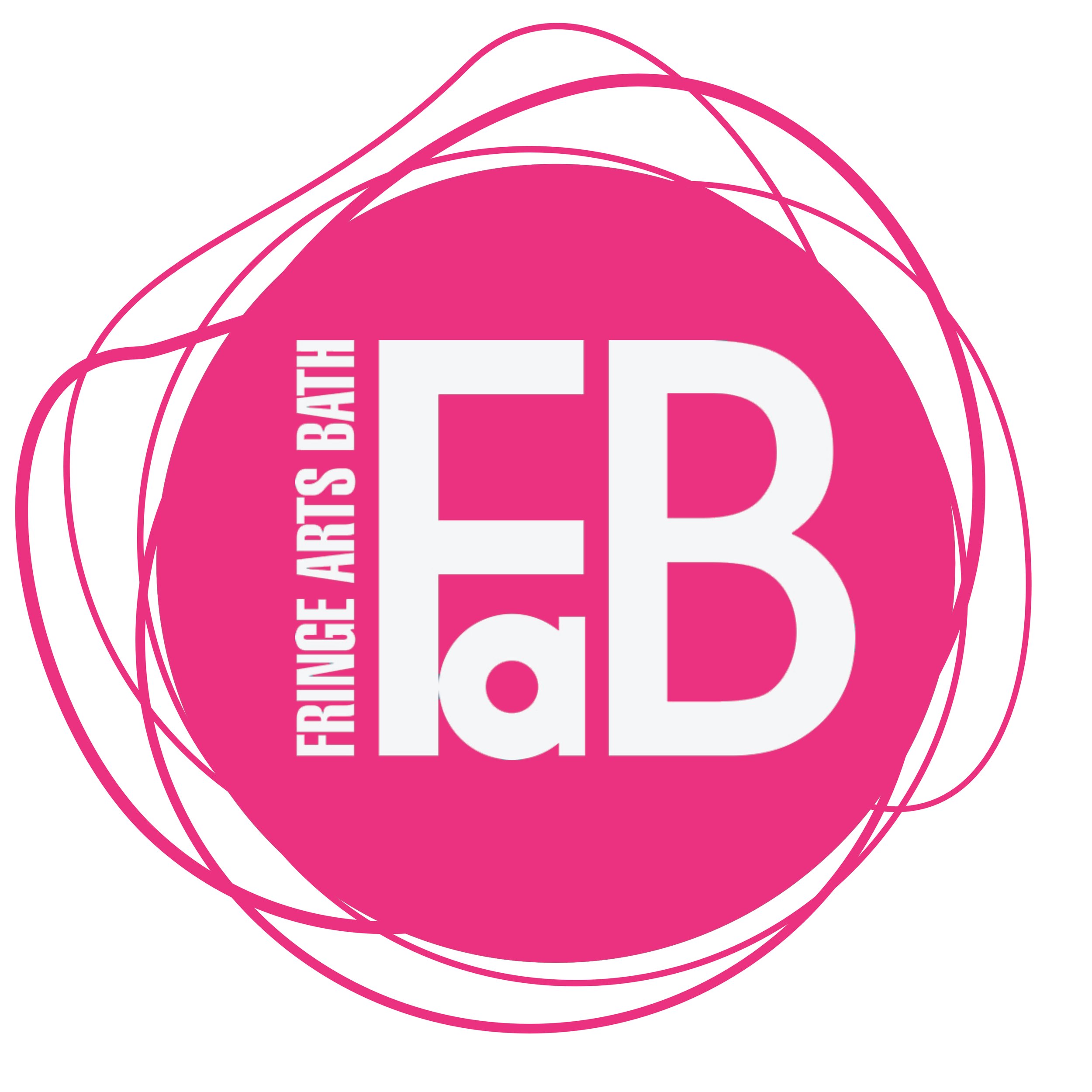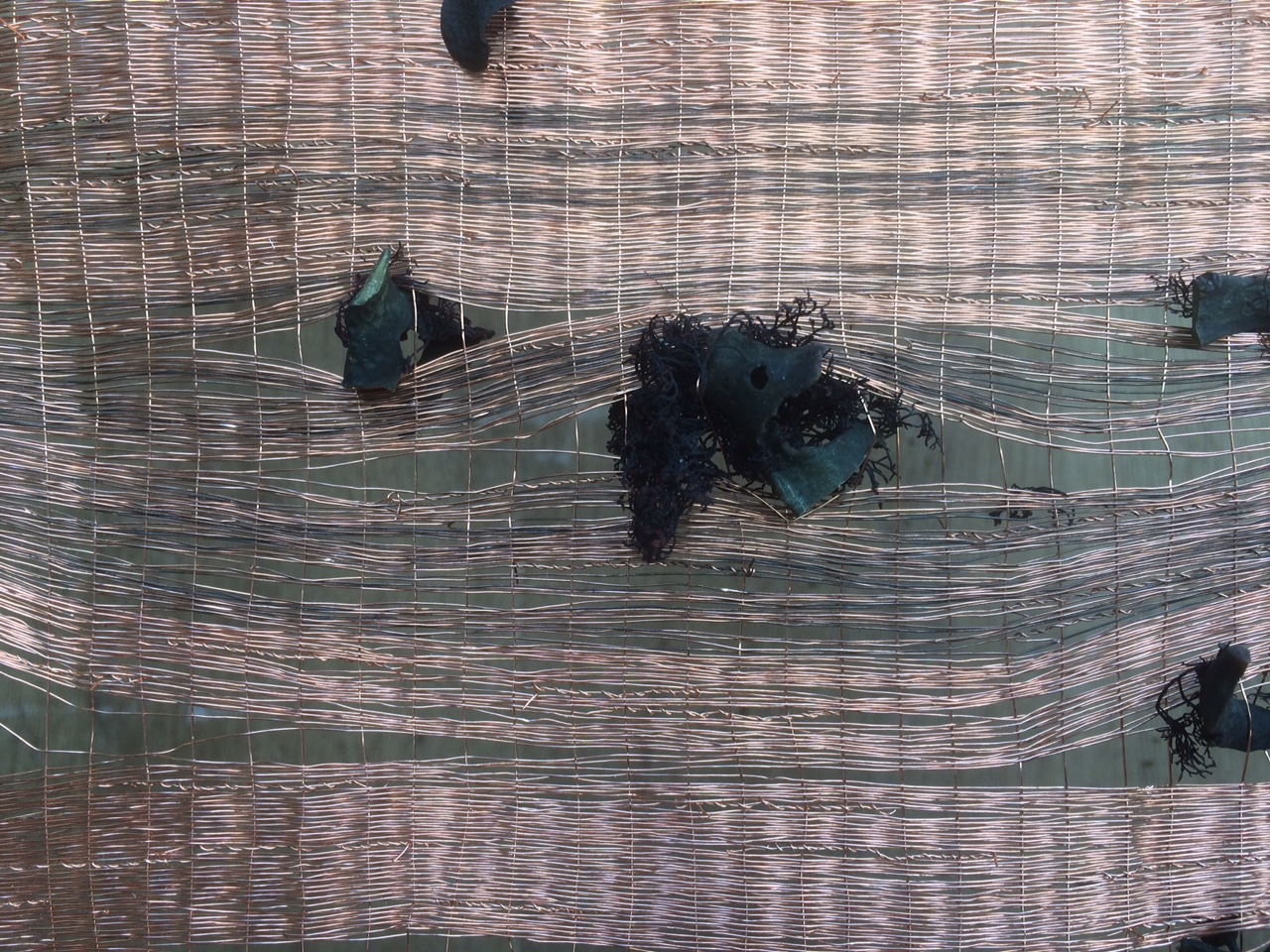FaB 2, 6-7 New Bond Street Place, Bath BA1 5BH
25 May open 6pm 'til late - #FaB18 Opening Night Arty Party
open 10am to 6pm daily - 26 May to 10 June
KINdoms
Textiling with the more-than-human
KINdoms explores textile arts inspired by eco-feminism/phenomenology. Dispensing with the hierarchies between humans and non-human species – this exhibition probes our connections as part of a larger web.
As meshes of plant, animal, mineral networks, textiles are nomadic across species, time, place and material state, so artists explore textiles as an interface, (de)construction or surface with Others / Self. All around us is vibrant matter, invisible yet perceptible eg. air, rainwater, starlight. Connecting with real or imagined trees, animals, seasons, or the soil via textiles.
This exhibition features the work of an international and local cast of artists from Japan, Germany, and the UK working with stitch, print, weave, knit, dye etc in various scales and flows of agency between 2D/3D, image, text, trad crafts & new techs. It indicates ways of dialoging with ‘natural’ worlds.
Curated by Patricia Brien
Junko Oki
Time Machine, 2017
202 x 195
boro (cotton, linen, silk)
Photo: Kristien Daem
Junko Oki - post-punk textile artist
Junko Oki creates finely embroidered works on old textiles in the tradition of BORO. While her distinctly individual style reflects traditional genres the work is deeply personal and conveys an energy which traverses time and space.
Fabric is an interface between the body and the environment. It is a skin. Oki's insistent and meandering stitching and piercing of that skin composes new narratives. Time Travel (2017) combines the patina of age, of wear, of time passed with a spirit of pure disruption. A post-punk statement of intent.
TALK: Boro: of time, place & need
Speaker: Tim Parry-Williams (MA Textiles Course Leader Bath Spa University) 16:00, Friday 8 June
Juliet Duckworth - UNFOLDING LANDSCAPE
Juliet Duckworth Mapscape (2017)
1.4m x 2m calico, acrylic, mud, stitch and oil paint
Juliet Duckwork's body of work - Unfolding Landscape - is about the transience of nature and how time and erosion alter it irrevocably. In Mapscape the piece evolved over several weeks to demonstrate this interest. By burying and weathering materials and leaving them for lengths of time Duckworth explores how these materials become stained and decayed and how creases and folds naturally occur. As there is no control over the results of the ageing process there is an element of chance in the outcomes and consequently the process becomes the subject.
Artist talk - Thursday 7th June 14:00
Bridget Kennedy
Artists Bridget Kennedy + Sabine Kussmaul in conversation with curator Patricia Brien June 9, 1400
Born out of the1960s, with its noble and optimistic visions for the future, the nuclear power industry appears not to have met all these idealistic ambitions. Fears for the future arising from the uncertainty about power plant safety and nuclear waste disposal has influenced public confidence and given rise to the consideration of a future beyond the human. In face of the vast scale and complexity of 21st century power politics, I have responded on a domestic scale.
As a homage to the laborious hand-work of the ‘copper ladies’, who worked out of the copper mine at Parys Mountain on Anglesey, I chose to make a series of weavings with fine copper threads, recycled from electrical cables. Copper becomes a symbolic material in the work: from its role in Michael Faraday’s early experiments, its use in cables transporting power into our homes, to its potential use as a containment material for nuclear waste. Whilst evoking a past tradition of hand-making, the act of weaving with this material also hints at a time, far into the future, when natural fibres may no longer be available, energy sources are depleted and human resourcefulness turns to recycling a now-redundant power distribution network.
Bridget Kennedy, Daughter Elements 2018
Nikki Allford, Shapeshifts 2018
Nikki Allford
As a maker and installation artist, Nikki Allford works with found or throwaway materials, transforming and manipulating materials with a twist that injects the familiar with new insight and unsettling expectations. Her installations have a presence that disrupts a space, often responding to a sense of place.
Allford investigates the way repetitive actions can result in the
formation of a work. Structures are built from the accumulation of
lines and tape. The resultant pieces can be read as abstract or as
hinting at other qualities - the work shapeshifts - reminiscent of the innards of the body, skins, webs, pelts or pools of blood or water, slices of bone, or flowers.
Tape rolls are left in place. This simple gesture contextualises the
forms so the materiality of the piece- the very products that it is made from are clearly referenced. This act anchors the piece to both method and maker.
Nikki Allford is a maker and Installation artist based in Bristol, UK.
Sabine Kussmaul
Sabine Kussmaul is a visual artist based close to Macclesfield, UK. She has a background in Fashion Design and Illustration and currently studies for a Masters Degree in Fine Art at the University of Chester.
In her current practice Sabine explores the relationships between self, body and environment, using drawing, installation and video. She works in the studio and also outdoors on the hills of the Peak District, where she makes three-dimensional line installations.
Line is an essential ingredient in her practice. She uses it as a means to bring an embodied dimension of movement and journeying to her drawings. Line also functions as a metaphorical device that connects elements in contexts and works as a means to introduce the element of time, as things happen, ‘along a line’ or ‘one after the other’.
Microbes, rhythm, big construction, 2014.
This work uses line in the form of improvised hand stitching as a means to draw images, weave clouds of colour and construct shapes onto transparent fabric surfaces. Kussmaul allows the threaded lines to develop freely, ambling about and letting images
emerge. she notes that the threads 'curl into rounded shapes' seemingly from their own volition; The nature of the thread. the repeated process of stitching into the fabric and pulling it out again makes the yarn arrange itself in organic shapes of curls and curves.
Sabine Kussmaul
Film still, Moving Lines
Moving Lines
This video shows how installations made from elastic textile bands on the hills of the British Peak District. The installations are made in response to the land and its features and in consideration of the actual conditions of wind, rain and topography. One single line or whole installations move in response to the wind. The lines emit strangely hypnotic and constantly changing sounds. The lines’ movements seem to reference line features in the visual landscape. I can be seen handling and engaging with these lines, at times struggling for control.
Kussmaul, S. Microbes, rhythm, big construction, 2014. Transparent fabric, thread, canvas, acrylic
paint, in Perspex box.
Artists Sabine Kussmaul + Bridget Kennedy in conversation with curator - Patricia Brien June 9 1400
‘Hanging by a thread’
Branch, thread, concrete
240 x 100 x 50 cm
Nicholas Cheeseman
The sculpture combines a 9ft embroidery made from white thread and a found branch that has been stripped of its bark. The embroidery depicts the map of the first public park in Munich that stretches from the heart of the city, following the line of the river Isar, to the northeast city limits and the countryside.
To some the embroidery appears fragile and points to the relationship between urban spaces, the natural world and ourselves. To others the map appears web like and unifying, reflecting the balance that can be achieved between humanity and nature. The materiality of the wood and thread are an intrinsic part of the sculpture. The texture and strength of the thread are in contrast to the smooth rigid surface of the bare wood. The complimentary opposite nature of these elements allude to the relationship that is being explored between nature and the urban environment.
Amanda Lwin, THE CARTOGRAPHER TRIES TO MAP HER WAY TO DEPTFORD
Amanda Lwin
Fishing nets woven by Polynesian sailors are one inspiration for Amanda Lwin’s handwoven textile. By mapping wind and sea currents within the lines and nodes of their weave, these intricate nets revealed an unseen natural infrastructure that conditions the course of journeys, and allowed their creators to navigate vast oceanic distances.
Deptford is a neighbourhood in South East London with an evocative maritime history. Alluding to these associations, Lwin’s handwoven net charts electric power cables under the streets of this neighbourhood, starting from a major substation on the Thames. The work’s title is drawn from poet Kei Miller’s 2014 collection, in which a Cartographer and a Rastafarian dispute the properties and capabilities of mapmaking in asserting control over territory.
Produced specifically to fill the space above a cafe courtyard during the Deptford X Festival, ’The Cartographer Tries to Map her Way to Deptford’ belongs to the artist’s ‘Capricious Cartography’ series – mapmaking that is more equivocal, mutable and unstable than traditional cartography. It was originally suspended above the heads of cafe customers: recalling both an acrobat’s safety net, or a hunter’s trap; equally robust and fragile. In this time of uncertainty about how Britain relates to the world, of heightened sensitivity towards maritime borders and fishing rights, Lwin’s handwoven artwork affirms our continued dependency on physical connections to people, places and ideas that lie beyond the scope of our immediate understanding.
Lisa Porch
Lisa Porch is a practising textile artist and academic. Her practice is concerned with two main discourses ‘Language’ and ‘Loss’. ‘Language’ explores marks, text, emergent writing and vocabularies. ‘Loss’ explores mourning and absence. She has a research interest in how conserved and archived textile artefacts in museum spaces can be used as metaphors for absence and curated decay in conceptual textiles.
Her work for KINdoms ‘Stonecrop and Slate’ was inspired by observations of stonecrop growing vivaciously over sunken slate and stone gravestones; a shared materiality and a metaphor for life and death coexisting as part of a whole. Multiples of wrapped yarn stems are hand embroidered with French knots and laid on slate.
Artist talk: Saturday 26th May 1400 & Saturday June 2, 1700
Alison Harper
Angel Wing is constructed from the stitched inner polyethylene linings of paper coffee cups. This piece refers to our relationship with matter; by altering and reinventing these materials commonly seen as ‘waste’ Harper is questioning how we exist in the world, reassessing stasis and inertia and our impact on the biodiversity of the planet and also on ourselves.
Artist talk: Thursday, June 7 14:00
Alison Harper, Angel Wing
Milly Rowland
rowland has recently graduated with a MA Fine Art student from Birmingham City University. Compelled by capturing biodiversity and layers of life, creating worlds of imaginary creatures she likes to highlight creatures that are somewhat maligned, with a healthy sprinkling of tentacles and strange biological growths her works are teeming with almost recognisable life.
Artist talk: Saturday 2nd June 17:00
Physalia Unraveled
Annelies Egli with Joanna Espiner

















